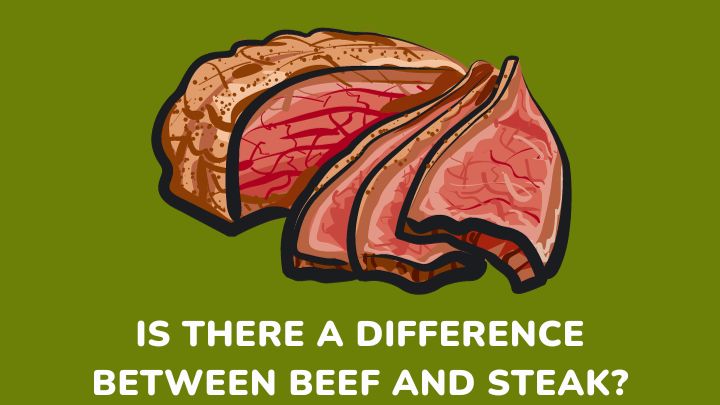Here’s a detailed comparison of beef vs steak to help you understand the differences and similarities between the two terms.
Beef and steak are two commonly interchanged terms used to describe meat from cows. People often use one in place of the other, but this is not always correct. In some contexts, steak may not be beef and beef may be an incorrect word for steak.
Also, some people think beef refers to raw meat while steak refers to grilled or roasted meat. Well, I’ll start with this: steak can be made with beef, but beef is not always steak. I know this sounds puzzling. Continue reading to get the full gist on beef vs steak.
What is beef?
Beef is a type of meat that is cut from a mature cattle animal which could be a cow or a bull.
Bulls or sires are better sources of beef because they are usually larger than cows and have more lean muscle mass. Cows are bred mainly for producing milk.
There are several ways you can prepare beef. You can boil, fry, roast, grill, broil, broil, mince, pan-sear, or sauté beef and serve it by itself or as part of another recipe. You can also make ground or minced beef for other recipes.
How did steak get into the scene?
Steak can be beef, pork, lamb, or other big animals that have lean muscle mass.
But most times, steak refers to beef cut across the muscle fibers of the body of cattle. Steak cuts have a different texture and flavor that sets them apart from other beef cuts.
Steaks are mostly grilled or roasted. But some recipes call for boiled steak when the meat must be more tender. Recipes like this do not require the characteristic flavor that comes from grilling or pan-searing steak.
Are all steaks beef?
Not all steak cuts are beef. Other common types are pork, chicken, lamb, and fish steaks. Beef is the most common type of meat used to make steak and that is why it is often mistaken that steak must be beef.
Beef vs steak
As mentioned earlier, beef is any meat from cattle while steak is a portion of meat cut across the grain of the muscle fibers.
The flavor and texture of beef vary with how you prepare it. Steaks always come out with a caramelized crust and tender interior, especially if you grilled it.
Beef cuts have more marbling than steak cuts. However, a steak can also have more marbling if it is cut along the regions where fat is concentrated. The method of cooking used to prepare beef or steak cuts determines their nutritional profiles.
Another important thing to note in this beef vs steak comparison is that there are eight primal beef cuts. The different steak cuts come from these different beef cuts.
Beef cuts
Chuck
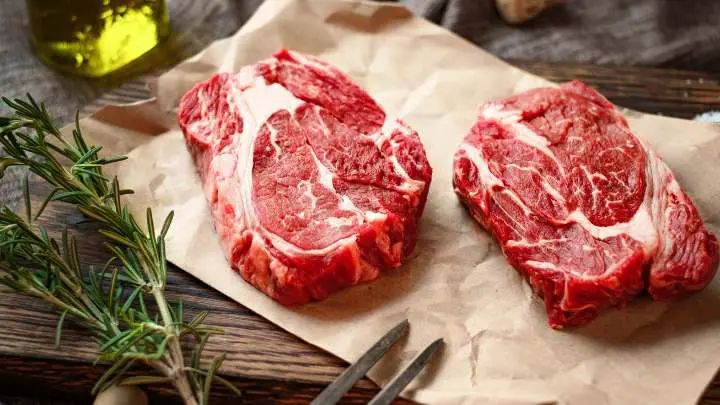
The chuck cut is found near the head section of the cattle. It contains a good deal of connective tissue, thick muscle fibers, and collagen. The thick muscle fibers are a result of how much work the muscles do during grazing.
It produces very tough but flavorful meat cuts. Chuck has a high fat content which makes it good for making ground beef for burgers and beef stew. They are also ideal cuts for braised dishes like pot roast.
Some steak cuts from the chuck are flat iron steak, top blade steak, clod heart, ranch steak, Sierra steak, petite tender, chuck arm roast, chuck eye roast, chuck eye steak, and Denver steak.
Rib
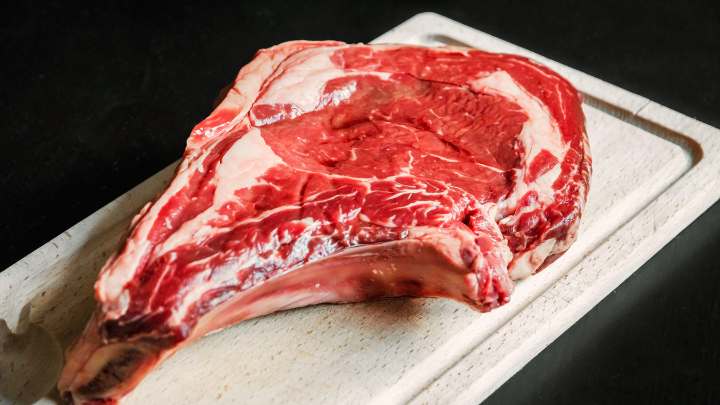
The rib primal cut comes from just underneath the chuck. It specifically comprises the sixth to twelfth ribs. The ribeye, bone-in, rib filet, ribeye roast, back ribs, cowboy, and chef-cut ribeye steaks.
The meat here is very tender and is a perfect choice for grilling, roasting, and searing in a skillet. These methods of dry-heat cooking make the meat tender and retain its flavor.
Loin
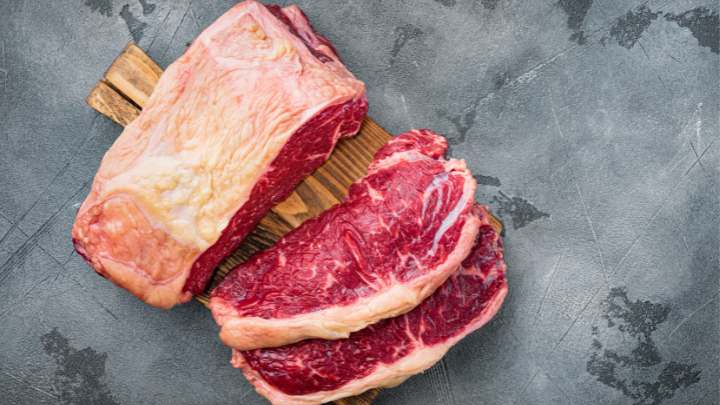
The loin cut is between the rib and round cuts, just above the back half of the plate and flank. Beef loin could be the short loin, the sirloin, or tenderloin.
The short loin produces the porterhouse, T-bone, filet mignon, strip roast, strip filet, boneless strip steak, and hanger steaks.
The tenderloin is an extension of the short loin into the sirloin. Sirloin is the last part of the loin primal cut. This part is divided into the top and bottom sirloin. The top sirloin is more tender and best for grilling, whereas the bottom sirloin is tougher and best for roasting.
Some steak cuts from the sirloin are the tri-tip, ball tip, sirloin filet, top sirloin steak, center cut sirloin steak, and coulotte steak.
Round

Beef round is the largest beef cut and produces a lot of steak cuts. Some of them are rump roast, top round London broil, top round roast, eye of round steak, sirloin tip center roast, and bottom round London broil.
The meat here has lean muscles. However, the meat here is tough because the legs and rump do a lot of work.
Meat cuts from this area are the best choices for braised dishes, roasts, and sandwiches (when cut thinly).
Flank

This primal cut comes from the abdomen of the cow. Beef flank cuts have a coarse texture and tough muscle fibers.
Funnily, it will become tougher if you overcook it. The best way to enjoy this beef cut is to grill it quickly at a high temperature.
The texture of this beef cut makes it excellent for braising and making ground beef. If you grill your flank cuts, slice it thinly against the grain to prevent it from becoming chewy.
Short plate
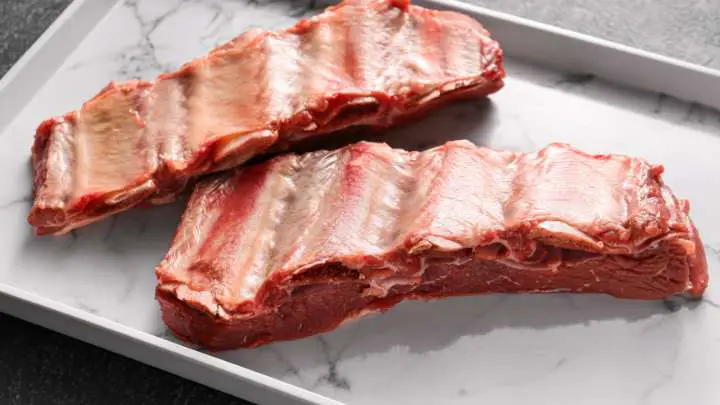
The short plate primal cut produces only two steak cuts: short ribs and an inside skirt. This beef cut comes from the cow belly. The skirt steak comes from the diaphragm muscle.
It is a thin piece of meat with a lot of coarse muscle fibers. To avoid chewiness, cut it against the grain when you are ready to serve it. Its toughness and coarse texture make it ideal for braised dishes.
Shank

The beef shank comes from the leg of the cattle thighs. There is one shank in the forequarter and one in the hindquarter of the animal.
The shank is a very tough part because it is full of connective tissues. Its texture makes it the ideal cut for a traditional Italian meal called osso buco.
Brisket
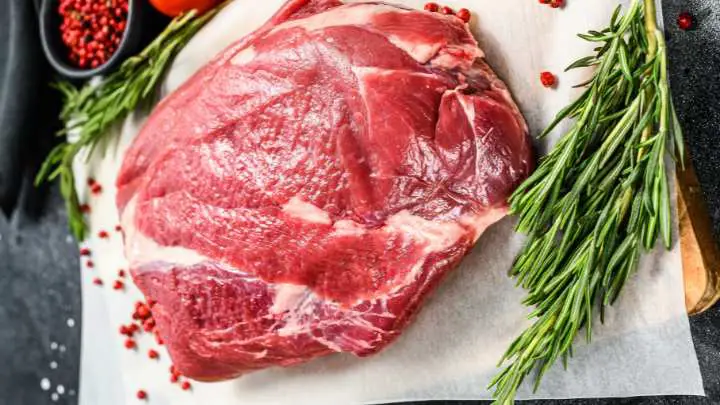
The beef brisket is very flavorful despite its toughness. If you cook it the right way, you can make it very tender and succulent with all its natural flavors intact. Beef briskets from the breastbone area – the chest or pectoral muscle of the cattle.
These beef cuts are thick and have a coarse-grained texture. They require slow cooking and low heat to break down and tenderize.
Steak cuts from the brisket are whole briskets, brisket flat, and brisket point. They are best for making barbecue, pot roast, and corned beef.
Common steak cuts
Ribeye
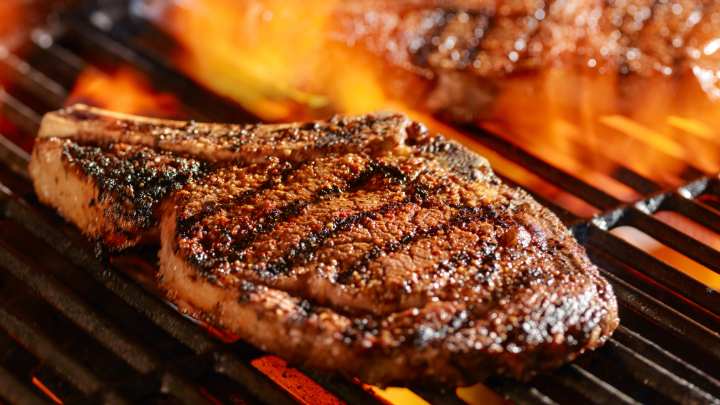
As the name suggests, this steak cut comes from the center of the rib section of the cow. Some ribeye cuts come with the bone in or boneless.
This steak cut is very tender. The best way to enjoy it is to cook it medium or medium-rare level of doneness. The ribeye steak has a good marbling of fat that contributes to its tenderness and rich flavor.
T-bone

T-bone steak is a high-quality steak that comes from the short loin of the cow. It comprises the New York strip, a T-shaped bone, and the tenderloin filet. A T-bone may be a porterhouse or not depending on the thickness of the filet.
A T-bone is a porterhouse only if the filet is at least 1.25 inches thick from the bone to the widest point on the filet. Anything lesser than this is a T-bone steak.
Porterhouse
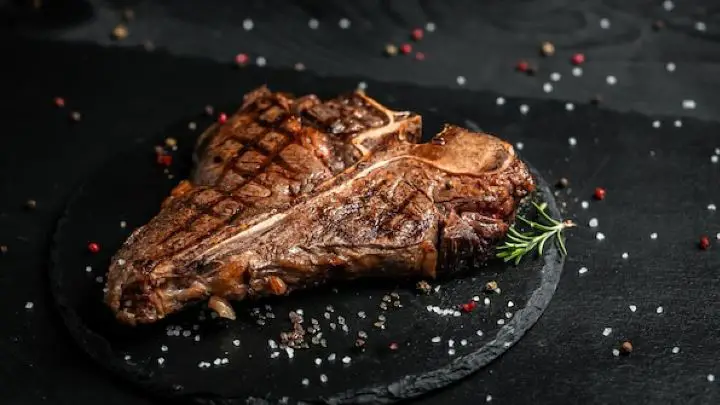
A porterhouse steak is a T-bone steak. This steak cut is from the rear of the short loin of the cattle where the tenderloin is thickest. It has a t-shaped bone that runs from the top to the bottom and divides the tenderloin from the New York strip.
The porterhouse cut is a high-quality steak. It is rich and flavorful by itself, so you may not have to marinade it. But if you want to, it won’t be a bad idea.
Filet mignon
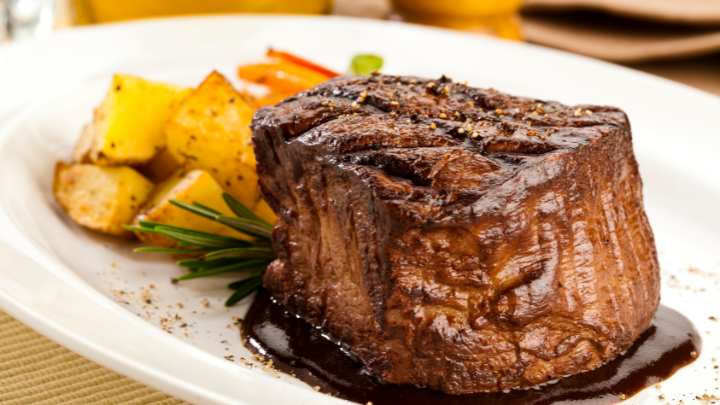
Filet mignon is a small, thick, fatty steak from beef tenderloin. It is the most tender and expensive steak cut everywhere.
If you visit a steakhouse, do not be surprised to see most people order the filet mignon because of its exceptional texture and flavor.
This steak is lean and has a very fine-grain texture. The best way to cook this steak and get the most out of its buttery, mild flavor is to sear it until it is browned on the outside.
New York strip

New York strip also comes from the tenderloin. It is one of the parts that make the porterhouse and T-bone steaks.
This steak is usually boneless with fat marbling around its edges. It is fine-grained in texture and has a natural beef flavor.
The New York strip steak is tender, but its tenderness is not comparable to the ribeye or filet mignon. The best way to prepare this steak is to pan-sear, grill, or broil it.
Skirt
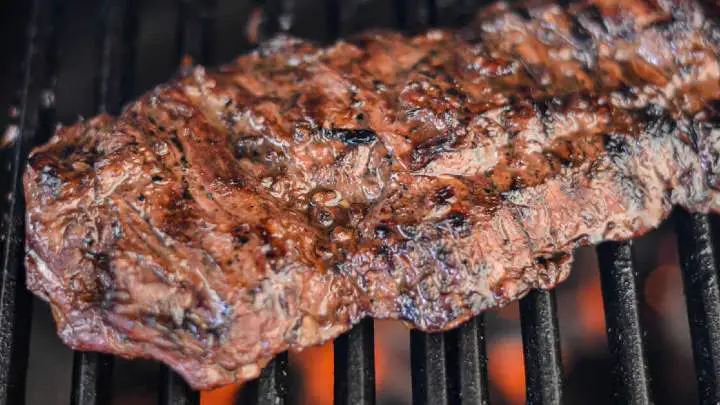
Skirt steak is a thin, flat, and long steak cut from the stomach region of a cow. Although it is flat and thin, it is a tough meat cut. The best way to cook skirt steak to get the best of its flavors is to cook it slowly on low heat to avoid overcooking it.
Marinate the steak so that it absorbs a lot of flavors and tastes great.
FAQs
Is there a difference between meat and steak?
Meat is the muscle tissue of animals that is eaten as food. Examples of meats are beef, lamb, chicken, and pork. Steak is cut from across the muscle fibers of beef, pork, lamb, or fish.
Can you make steak with fish?
Yes, larger fish like salmon, tuna, cod, and swordfish can be cut into steaks. You can grill, broil, bake, or pan-sear these steak cuts, just like beef and pork steak cuts.
Which steak cut is the most popular?
Filet mignon is the most popular and widely demanded steak cut. The filet mignon comes from the tenderloin, which is cut from the short loin of the cow, and is a rarely worked muscle.
Which is the fattiest steak?
Ribeye steak has the highest fat content. It is a tender steak with a savory flavor. Cooking ribeye steak to medium rare brings out its natural flavor and makes it very tender.
Conclusion
So, the beef vs steak puzzle is solved. Steak could be beef, pork, lamb, bison, deer, buffalo, etc. Beef can be cooked in other ways other than steak.
Both meat forms could be raw or cooked. Beef generally refers to meat cut from a cow, while steaks are cut across the muscle fibers of beef.
The whole misconception began when chefs started making steaks. Moreover, the majority of steaks are beef. If beef steak is the only steak you have had, you should try the other types.
Looking to save money when shopping for meats? See a list of the cheapest chicken, beef, pork, and turkey cuts.
Thanks for reading.
